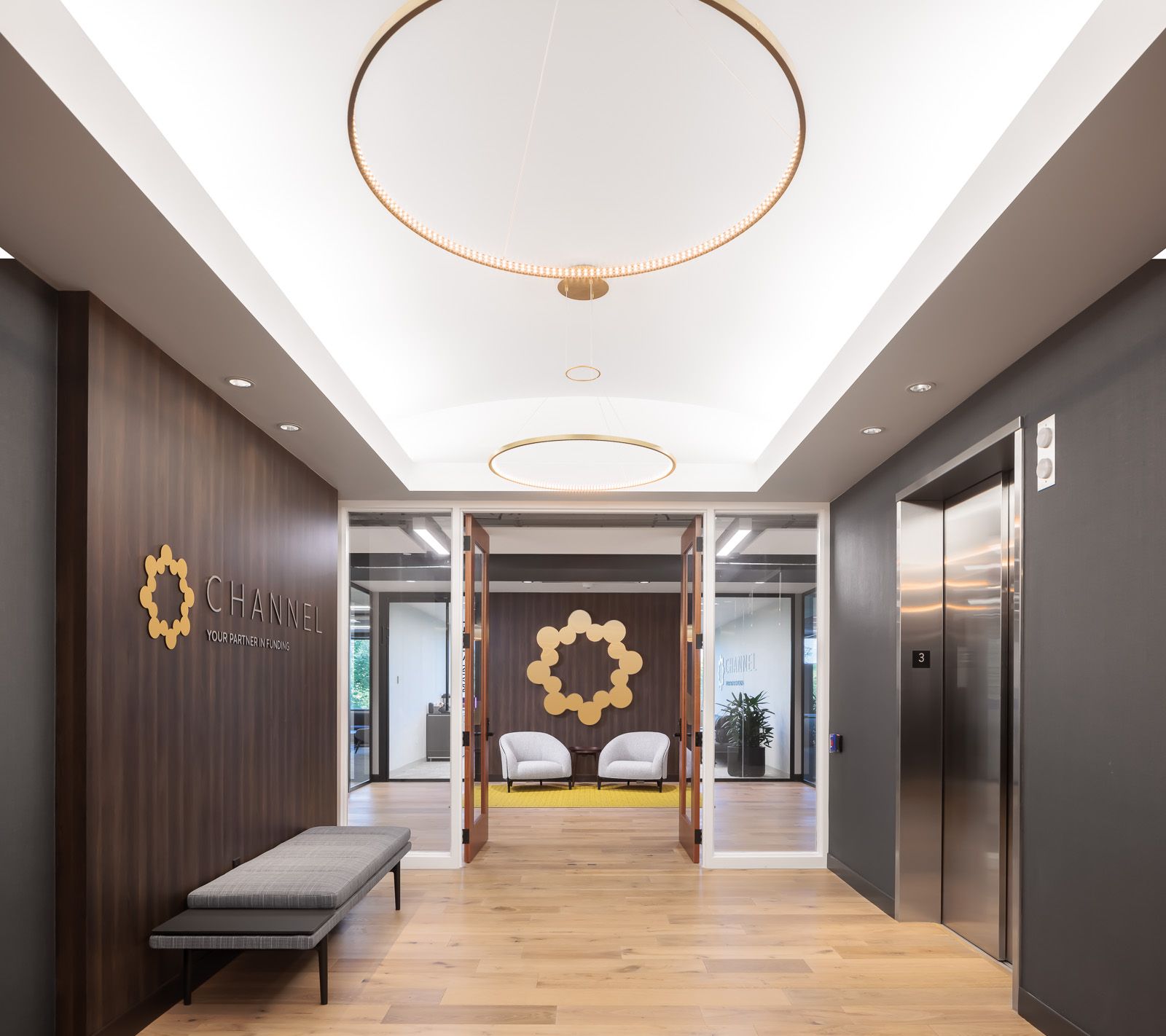
NELSON Worldwide recently completed the design of Channel Partners’ new office in Minnetonka, focused on fostering camaraderie and productivity through a dynamic layout featuring vibrant brand colors, social interaction spaces, and strategic lighting.
Channel Partners expressed a strong desire for a space that would promote teamwork among employees and serve as a central hub for recognizing their achievements. Their mission to provide intelligent financing solutions and empower small business owners to succeed guided the design process. Recognizing NELSON Worldwide’s expertise in creating dynamic work environments, Channel Partners enlisted the firm’s services to prioritize the well-being and productivity of their team.
The 33,140 square-foot office in Minnetonka immerses staff and guests in a lively workplace atmosphere. The layout seamlessly integrates various spaces, including open office plans, private glass-front areas, training rooms, board rooms, dining spaces, collaborative zones, and even a speakeasy. The design team carefully balanced Channel Partners’ brand colors while infusing vibrancy throughout the office.
Creating areas for social interaction was a key focus for the design team. The “MMix Lounge,” designed as a speakeasy-style bar, provides a space for staff to unwind, socialize, and connect with their colleagues. The employee training room flows into “Channel Hall,” a versatile dining area, encouraging collaboration and informal gatherings. Glass-front executive offices enhance visual connectivity among personnel, promoting interaction and energy within the workplace.
Strategically-placed collaborative zones equipped with Teknion phone booths offer staff semi-private workspaces for independent tasks or discussions. The design team also carefully considered lighting to reflect the dynamic nature of Channel Partners’ workforce, creating a hospitality-like ambiance that bridges workstations and interactive areas seamlessly.
With 183 square feet of office space per person, the new Channel Partners office provides employees with a space to work, connect, and thrive. The design successfully establishes harmony throughout the office, emphasizing collaboration, productivity, and community within the workplace.


